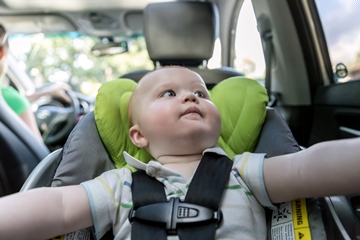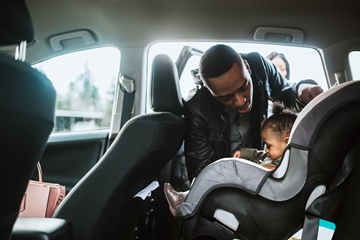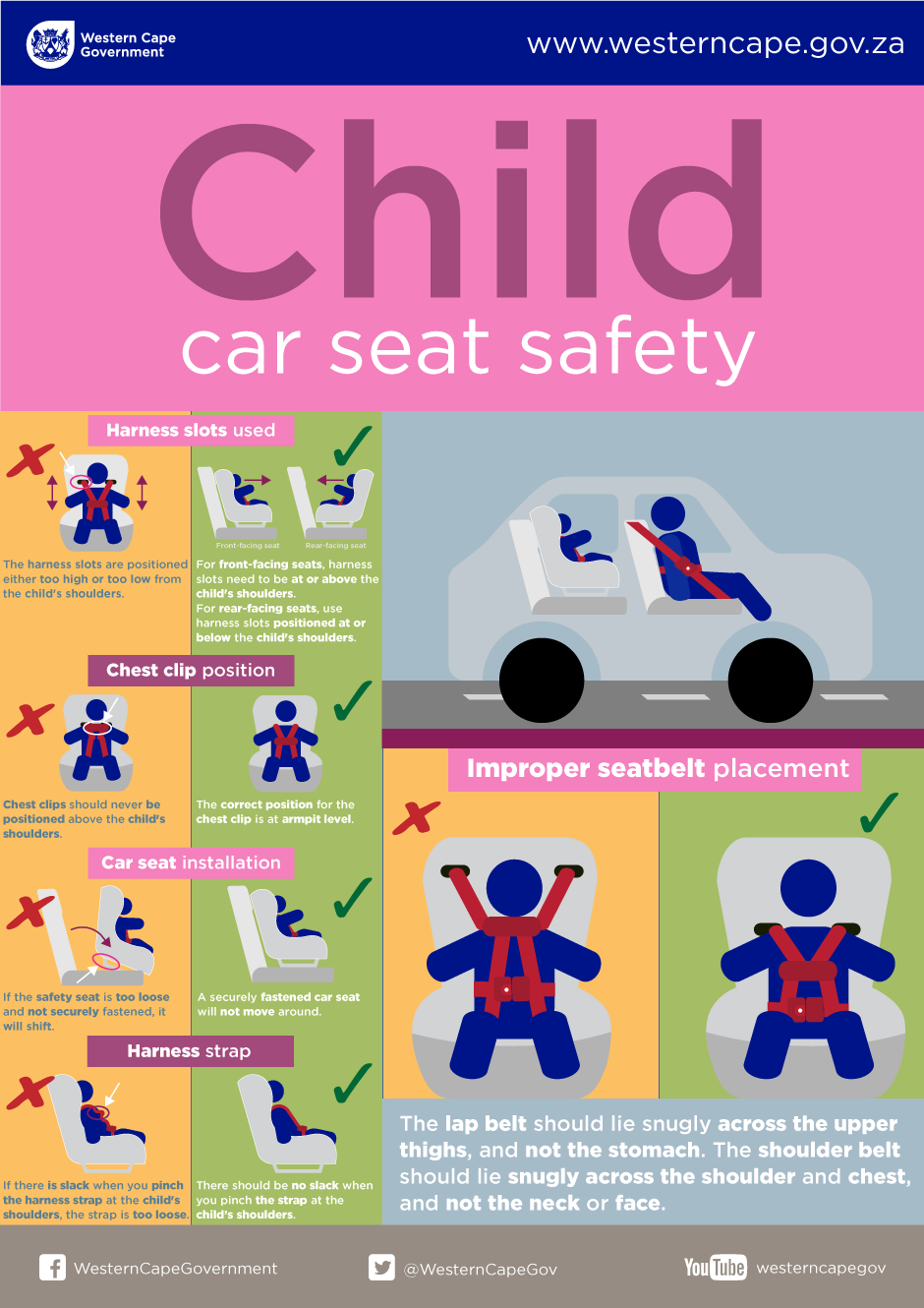Child Car Seat Safety
The National Road Traffic Act was amended to ensure all drivers transporting children under 3 years old to strap them into a car seat when travelling in vehicles.
The stats below reflect the number of children seen at the Red Cross Emergency Centre / Trauma Unit in 2018 due to injuries sustained in car accidents.
| Age | Number of children |
| 0-5 years old | 290 |
| 6-12 years old | 475 |
| TOTAL | 765 |

Seat belts and car seats are important because they:
- reduce the seriousness of injuries,
- prevent the child from being ejected from the vehicle in a crash, and
- prevent injury to other passengers (an unbuckled child could be hurled forward in a crash, injuring front seated passengers).
As a parent, it’s important for you to:
1. Find a car seat that fits your child.
- As children grow, how they sit in your car will change. Make sure the car seat you buy is designed to fit your child’s current size and age.
2. Make sure that the car seat is the right fit for your car.
- Not all car seats fit in all cars. Test the car seat you plan to buy to make sure it fits well in your car.
- Read your car’s manual, the label on the seat belt and the instructions on the car seat itself, to make sure you use the car seat correctly.
 Kids who sit in rear-facing car seats have the best protection for the head, neck and spine. It’s especially important for rear-facing children to ride in a back seat, away from the airbag.
Kids who sit in rear-facing car seats have the best protection for the head, neck and spine. It’s especially important for rear-facing children to ride in a back seat, away from the airbag.- Infants (birth to 1 year): if your child is younger than 1 year and/or weighs less than 9kg, they should sit in a rear-facing seat with the harness straps at shoulder level.
- Toddlers (up to 4 years): if your child is older than 1 year and/or weighs 10kg or more, they can sit in forward-facing seats, with the harness straps at their shoulders.
- Young children (4-12 years): if your child weighs more than 18kg they can sit in a front-facing booster seat, which must be used with both the lap and shoulder belt securely fastened. Make sure the lap belt fits below and tight across the lap/upper thigh and that the shoulder belt fits snugly across the chest and shoulder. This will help avoid abdominal injuries.
4. Take the next step to a booster seat when you answer “yes” to any of these questions:
- Does your child exceed the car seat’s height or weight limits?
- Are your child’s shoulders above the car seat’s top harness slots?
- Are the tops of your child’s ears above the top of the car seat?
Booster seats are best used only when a child has outgrown a safety seat.
Note: Booster seats raise the seating position of the child so that the adult seat-belt lies properly across the chest, crossing diagonally at the child's shoulder rather than the neck, and low across the pelvis. Also, always ensure that you keep the booster seat on the back seat of the car.
5. Avoid using an old or second-hand seat.
If you must use a second-hand seat, make sure it has the original instructions (or contact the manufacturer for a replacement copy), has all its parts (check the manual), has never been involved in a serious accident, and hasn't been recalled.
5 common car seat installation mistakes:
1. Wrong harness slots used:
For rear-facing seats, be sure to use the slots located at or below the child’s shoulders. For front-facing seats use the slots located at or above the child’s shoulders.

2. Wrong chest clip position:
The correct position is at armpit level. It should never be positioned above the child’s stomach.
3. Loose car seat (after installation):
The seat should be securely fastened and not be able to move around.
4. Loose harness strap:
There should be no slack when you pinch the strap at the child’s shoulders.
5. Improper seatbelt placement:
The lap belt should lie snugly across the upper thighs, and not the stomach. The shoulder belt should lie snugly across the shoulder and chest, and not the neck or face.
Note: Remember that the best car seat is the one that fits your child, your car and is easy to use correctly and safely all the time.
Child car seat safety
The Department of Transport and Public Works launched a new project, which encourages road users to #BeTheChange that they want to see on Western Cape roads.



